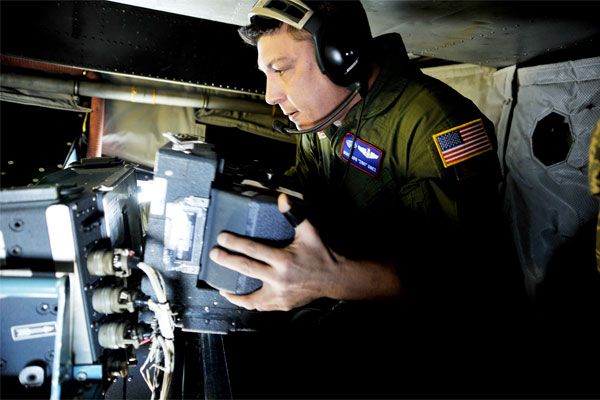The next generation of military space-bots are already in orbit as Russia, the US, and China each struggle for dominance in space.



We always hear how bad Russia is; etc. We never hear about these stories where they helped the US.
A U.S. Air Force surveillance plane making a routine flight over Russia to fulfill a treaty obligation was forced to make an emergency landing in eastern Russia earlier this week after experiencing a problem with its landing gear, a Pentagon spokes person told Fox News.
The unarmed American military plane had Russian officials on board as part of the 1992 Open Skies Treaty, which bounds 34 nations, including Russia and the United States, to allow military inspection flights to ensure compliance to long standing arms-control treaties and to offer greater transparency into each nation’s military capabilities.
“On July 27, a U.S. Open Skies Treaty observation aircraft took off from Russian airfield Ulan Ude to begin a Treaty observation flight but the aircraft landing gear did not fully retract,” Lt. Col. Michelle L. Baldanza, a Pentagon spokes person, said in an emailed statement to Fox News.
Dubbed the ‘Sea Hunter’, the 132ft ship is designed to travel thousands of miles out at sea without a single crew member on board.
The self driving warship has now completed its first trials — and passed with flying colours.
Experts say the vessel has the potential to revolutionise not only the military’s maritime service but also commercial shipping.

The space bomber will shoot nuclear bombs from space!

Nice.
Elite endurance athletes could be able to keep going for longer thanks to a new drink developed to give soldiers extra energy in battle, a study using former Olympians has found.
Scientists found that cyclists using the drink, which temporarily switches the body’s energy source from glucose to ketones, could travel an extra quarter of a mile than those taking a different energy supplement.
The idea of developing the ketone drink came from the US Army’s research branch, DARPA, who invited scientists to create the most energy efficient food that soldiers could take onto the battlefield.
On the path towards Singularity — I believe that this is an individual choice. However, to remain relevant and competitive in industry we may see a day when folks will require this type of enhancement to compete, perform in military operations, etc.
The researchers carried out a survey of more than 4,700 US adults.
The survey asked the public on views of gene editing, implantation of brain chips, and transfusions of synthetic blood.
More said they would not want enhancements of their brains and their blood: 66 per cent and 63 per cent, respectively, than said they would want them — 32 per cent and 35 per cent.

Russia has agreed to build a nuclear-powered aircraft carrier jointly with India.
According to sources close to the Indian Navy, Kremlin recently sent a letter to the Indian Defence Ministry in which the offer was made. A senior Navy officer told the press: “A Russian military delegation offered India the Project 23000E ‘Storm’ (E stands for export-oriented, Eksportny) heavy aircraft carrier several weeks ago.” The officer, who wished to remain anonymous, said that the Narendra Modi government was considering the offer and would make a final decision soon.
Speaking at a press conference in the Indian capital a couple of days ago, the officer said: “The surface combatant is known to have a full displacement of about 100,000 tonnes and a price of about USD 5.7 billion. The proposed carrier has been jointly developed by the Krylov State Research Centre (KGNC) and the Nevskoye Design Bureau (NPKB), a subsidiary of the United Shipbuilding Corporation. The building of the Project 23300 ‘Storm’ aircraft carrier is supposed to take about 10–11 years.”

Hmmm.
The technical details of air-to-air missiles are extremely complicated, but the concept is simple — destroy your target before the target destroys you.
One way to improve the odds is to add an air-breathing ramjet engine to give the weapon a boost. That’s the design philosophy behind the Meteor, a 419-pound rail-launched MiG killer which entered service for the first time with the Swedish air force on July 11.
Stockholm’s agile, delta-wing Gripen fighters carry the missiles.
The Zapata technology platform is the safest, easiest, lightest, most maneuverable, and least expensive personal aviation system ever created.
Capable of being operated with only 20 hours of flight training, or in fully autonomous mode with GPS guidance, ZAPATA’s proprietary balance methodology and algorithms are truly disruptive.
ZAPATA’s technology and innovative products will unlock hundreds of applications across multiple industry sectors, from military and rescue to entertainment and recreation.